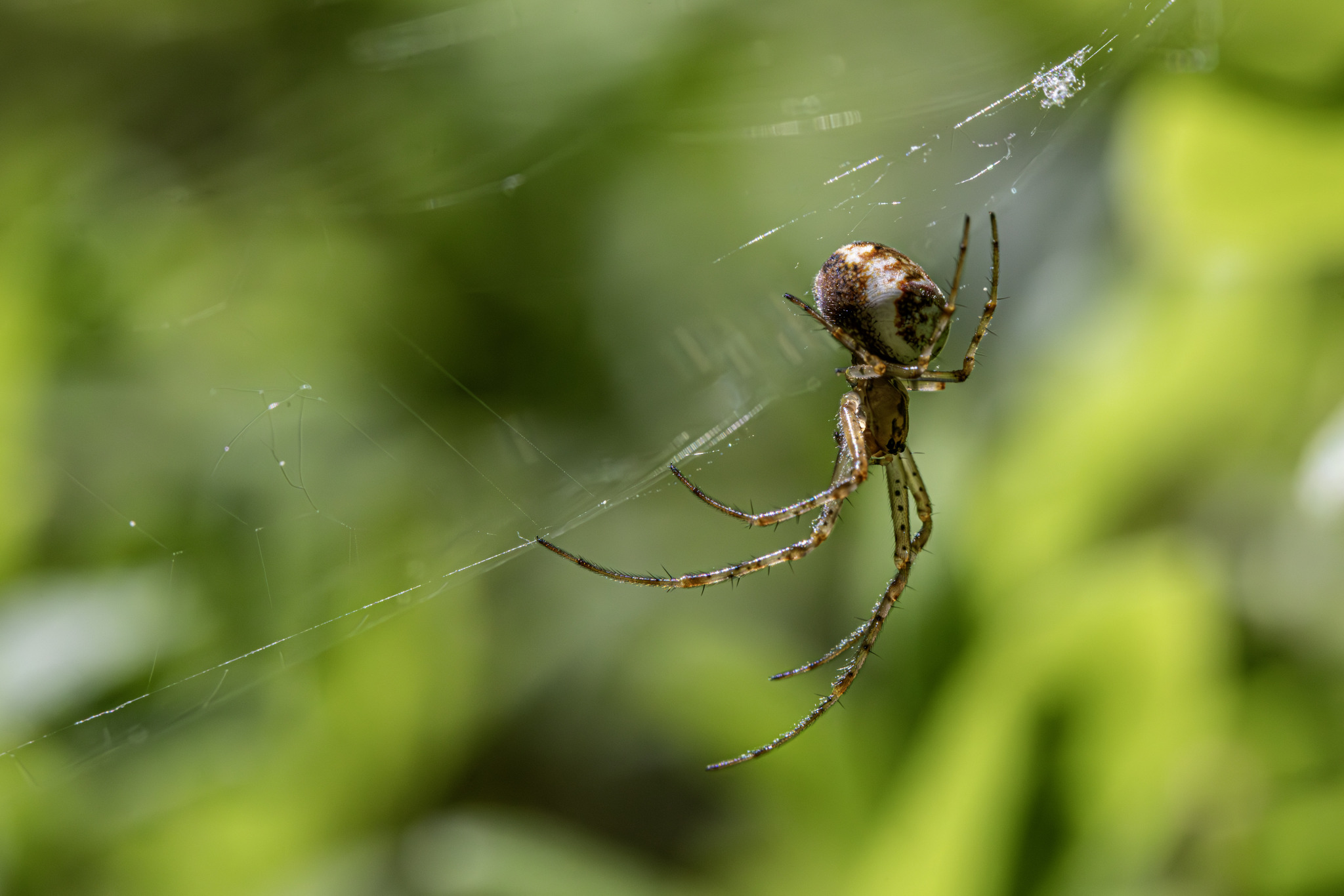The Long-jawed Orb Weaver (Metellina mengei) is a fascinating species of spider known for its distinctive appearance and intricate web-building behavior. Here’s an in-depth look at this intriguing arachnid:
Description
- Size: Metellina mengei is a relatively small spider. Females typically measure around 5-7 millimeters in body length, while males are slightly smaller, usually around 4-5 millimeters.
- Appearance:
- Body: The body is elongated and narrow. The abdomen is often patterned with shades of brown, yellow, and grey, sometimes featuring dark, chevron-like markings.
- Legs: They have long, slender legs which are usually banded with brown and yellow. These legs are well-adapted for weaving intricate webs and capturing prey.
- Chelicerae: As their common name suggests, they have long, prominent chelicerae (jaws) which are used for catching and subduing prey.
Habitat
- Distribution: Metellina mengei is commonly found across Europe. Their range extends into parts of Asia.
- Preferred Environment: These spiders favor humid environments and are typically found in woodland areas, gardens, hedgerows, and along riverbanks. They often build their webs in low vegetation or shrubs.
Behavior and Ecology
- Web Construction: Metellina mengei constructs orb-shaped webs, which are typically built close to the ground in low vegetation. The webs are relatively small but intricately woven, consisting of concentric circles of silk supported by radial threads.
- Diet: Like most orb-weavers, they primarily feed on small flying insects that become ensnared in their webs. Their long chelicerae help them quickly immobilize and consume their prey.
- Activity: These spiders are primarily active during the day, although they may also hunt at night. They often sit in the center of their web or nearby, waiting for prey to get trapped.
- Reproduction: Mating usually occurs in late summer or early autumn. Males approach females cautiously to avoid being mistaken for prey. After mating, females lay their eggs in a silk sac, which they attach to vegetation. The spiderlings emerge the following spring.
Conservation Status
- Threats: Metellina mengei is not currently considered threatened. However, like many spiders, they can be affected by habitat destruction, pesticide use, and climate change.
- Conservation Efforts: Conservation efforts for this species typically focus on preserving natural habitats and promoting biodiversity, which helps support healthy populations of both spiders and their prey.
Interesting Facts
- Long Jaws: The long chelicerae of Metellina mengei are not only useful for capturing prey but also play a role in mating rituals and competition between males.
- Web Maintenance: These spiders regularly maintain and repair their webs, often consuming the damaged sections to recycle the silk.
- Juvenile Appearance: Juvenile Metellina mengei spiders can look quite different from adults, with more pronounced patterns and coloration that help them blend into their surroundings.
Observing Metellina mengei
- Best Places: To observe these spiders, look in damp, shaded areas with plenty of low vegetation. Woodland edges, garden shrubs, and riverbanks are ideal habitats.
- Watching Tips: Look for their orb-shaped webs close to the ground or in low bushes. Early morning when dew highlights their webs can be a particularly good time to spot them. Approach slowly to avoid disturbing them, as they can be quite skittish.
The Long-jawed Orb Weaver (Metellina mengei) is a fascinating spider that plays a crucial role in controlling insect populations and maintaining ecological balance. Observing these spiders in their natural habitats can provide insight into the complex and intricate world of arachnids.
Visited 15 times, 1 visit(s) today
Views: 29
Subscribe to the newsletter:
